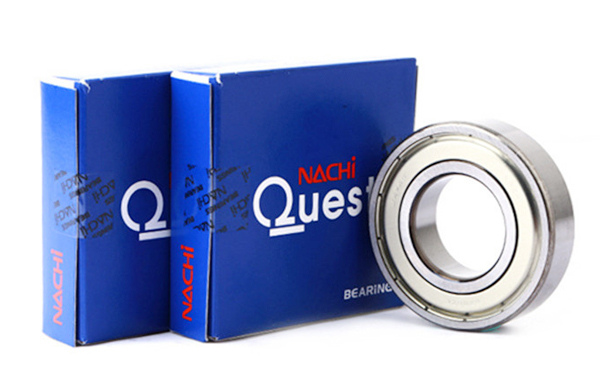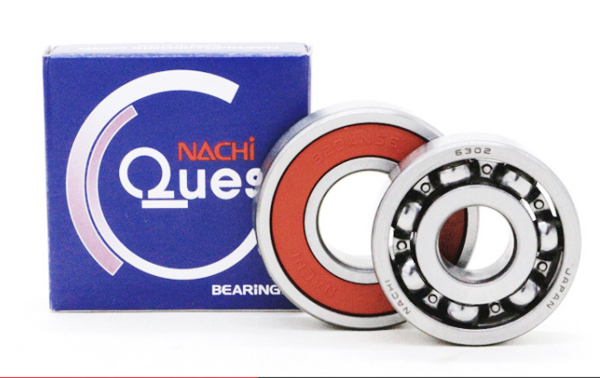Ceramic bearing
Ceramic bearings, as an essential mechanical foundation, have excellent performance that metal bearings cannot match, such as high-temperature resistance and super strength.
Advantages of ceramic bearings
1 Because ceramics are not afraid of corrosion, ceramic rolling bearings are suitable for operation in harsh conditions full of corrosive media.
2 Because the density of ceramic rolling balls is lower than steel, and the weight is much lighter, the centrifugal effect of the outer ring can be reduced by 40% when rotating, and the service life is greatly extended.
3 Ceramic is less affected by thermal expansion and contraction than steel, so when the gap of the bearing is constant, the bearing can be allowed to work in an environment where the temperature difference changes drastically.
4 Since the elastic modulus of ceramic is higher than that of steel, it is not easy to deform when subjected to force. Hence, it is conducive to improving the working speed and achieving higher accuracy.
The primary use of ceramic bearings
Ceramic bearings have the characteristics of high-temperature resistance, cold resistance, wear resistance, corrosion resistance, oil-free self-lubrication, and high speed. It can be used in extremely harsh environments and special working conditions. It can be widely used in aviation, aerospace, marine, petroleum, chemical, automotive, electronic equipment, metallurgy, electric power, textiles, pumps, medical equipment, scientific research, and defense, and military fields. High-tech products using new materials.
The ceramic bearing rings and rolling elements are made of all-ceramic materials. The holder is made of polytetrafluoroethylene, nylon 66. polyetherimide, zirconia, silicon nitride, stainless steel, or special aviation aluminum, thereby expanding the application area of ceramic bearings.
Classification of ceramic bearings Deep groove ball bearing
Deep groove ball bearings (technical grades: P4. P5. P6. P0), the most representative rolling bearings, are widely used and can withstand radial and bidirectional axial loads. It is suitable for high-speed rotation and occasions requiring low noise and low vibration, or high temperature, high cold, corrosion, magnetic field, non-insulation, and other fields that cannot be applied to steel bearings.
The outer ring raceway of the self-aligning ball bearing has a spherical surface and self-aligning, which can supplement the errors caused by different heart degrees and shaft deflections. It is used to generate various centers of shafts and shells, or parts of shaft flexures, and high-temperature, low-temperature, corrosion, magnetic field non-insulation, etc.
Single-row angular contact ball bearings
Angular contact bearings (technical grades: P4. P5. P6. P0), suitable for high-speed and high-precision rotation, do not affect its accuracy in high temperature, magnetic fields, water, etc., and can withstand synthetic loads. Standard contact angles are 15 °, 30 °, and 40 °. The larger the contact angle, the higher the axial load capacity, and the smaller the contact angle. The bearing can withstand radial and unidirectional axial loads. They are usually installed in pairs. Please pay attention when purchasing.

Stainless steel bearings
Compared with ordinary bearings, stainless steel bearings not only have distinct advantages in terms of material but also have stricter technical and precision control than regular bearings. During the working process, stainless steel bearings work stably, with low noise, corrosion resistance, and a wide range of applications.
Advantages of stainless steel bearings
1. Excellent corrosion resistance: Stainless steel bearings are not easy to rust and have strong corrosion resistance.
2. Washable: Stainless steel bearings can be washed down without having to relubricate to prevent rust punishment.
3. Can run in liquid: Due to the materials used, we can run bearings and bearing blocks in cash.
4. Slow depletion speed: AISI 316 stainless steel does not need oil or grease anti-corrosion protection. Therefore, if speed and load are low, no lubrication is required.
5. Hygiene: Stainless steel is naturally clean and non-corrosive.
6. High heat resistance: Stainless steel bearings are equipped with high-temperature polymer cages or cages that are not in a complete complement structure, and can run at higher temperature ranges from 180 ° F to 1000 ° F.
The primary purpose of stainless steel bearings
During the working process, stainless steel bearings work stably, with low noise, corrosion resistance, and a wide range of applications. Medical equipment, cryogenic engineering, optical instruments, high-speed machine tools, high-speed motors, printing machinery, food processing machinery.
Compared with stainless steel bearings, ceramic bearings have the following advantages:
1. High speed and acceleration ability, can run under conditions of in value over 3 million, and can reduce skid, wear and heat;
2. Long life and wear resistance. In most cases, the fatigue life of all-ceramic bearings is 10-50 times longer than stainless steel bearings, and the presence of hybrid ceramic bearings is about 3-5 times longer than that of stainless steel bearings;
3. Ceramic bearings can be self-lubricating without oil;
4. Strong abrasion resistance: Since the ceramic material is inert, it is more resistant to corrosion and wear;
5. high rigidity, due to the high elastic modulus of ceramic materials, its rigidity is 15-20% greater than ordinary steel bearings;
Compared with stainless steel bearings, ceramic bearings have the following disadvantages:
1 High cost and must be accomplished in a clean environment with skilled labor.
2 The processing method has high requirements, including overcoming the temperature gradient in the green body, applying pressure uniformly in a larger volume, and the resulting machine cost requires a slower sintering process.

Hot Tags: